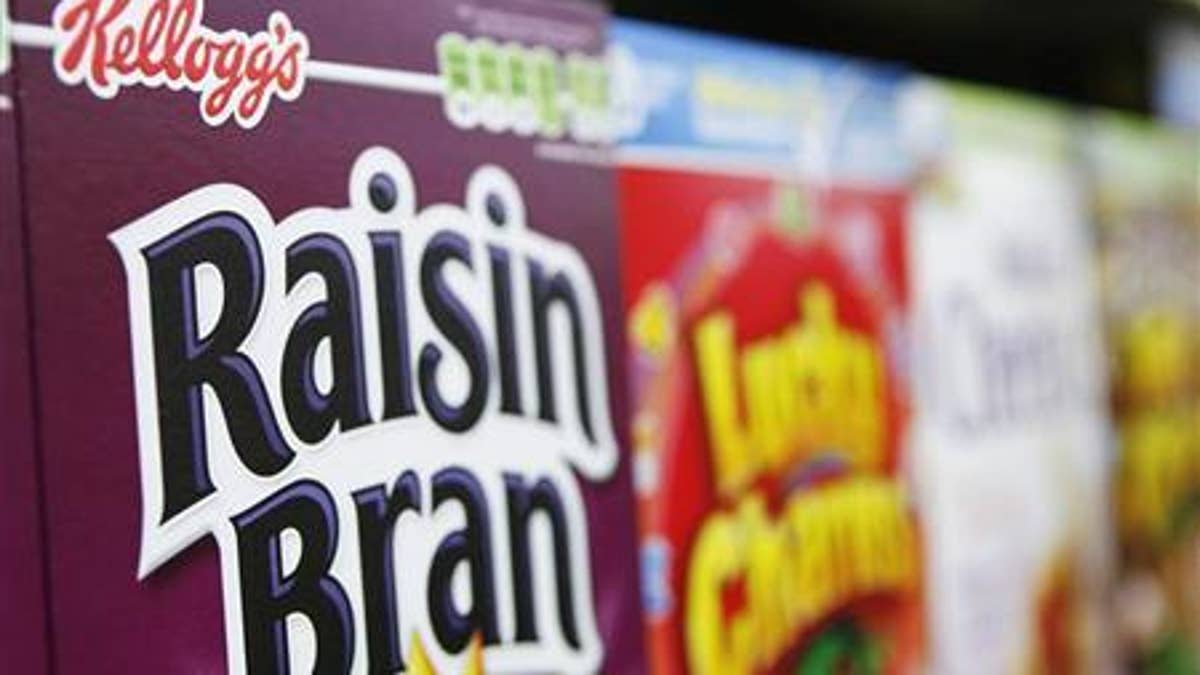
Boxes of Kellogg's cereal are stacked in a supermarket in New York in this April 29, 2008 file photo. REUTERS/Lucas Jackson/Files
U.S. food companies are making breakfast cereal for children healthier by doing cutting sugar and adding whole grains, but they are offsetting those benefits by targeting kids with more ads for their unhealthiest products, according to a report issued on Friday.
The findings, from the "Cereal Facts" study from Yale University's Rudd Center for Food Policy & Obesity, land amid growing alarm over diet-related health costs in the United States - where nearly one-third of U.S. children are overweight or obese.
Kelly Brownell, director of the Rudd Center, applauded recipe tweaks that have improved the nutrition profile of cereals from companies like Kellogg Co, General Mills Inc and Post Holdings Inc, but said there is still ample room for improvement.
"It's not enough and the companies are still using all their marketing muscle to push their worst cereals on children," Brownell said.
Spending to promote child-targeted cereals totaled $264 million in 2011, up 33 percent from 2008, according to the study, which followed up a similar report from three years ago.
The report called out aggressive marketing of cereals like General Mills' Reese's Puffs, Kellogg's Froot Loops and Post's Fruity Pebbles to children. It said those brands rank among the lowest for nutrition and the highest for added sugar.
Regular Cheerios and Frosted Mini-Wheats have some of the highest nutrition scores, but ads for those products are more likely to be targeted at adults, the report said.
"Rudd tends to look at the glass half empty. I look at it as half-full and rising," said Elaine Kolish, director of the Council of Better Business Bureaus' Children's Food and Beverage Advertising Initiative (CFBAI), a voluntary self-regulation program for food marketed to children.
Food and beverage companies in the United States have fended off government oversight of marketing to children by promising to police themselves through CFBAI. Participants, including Kellogg, General Mills and Post, have agreed to adhere to nutrition criteria for products advertised to children under the age of 12.
"Changing kids' taste preferences takes time and effort. The notion that kids could stop eating Froot Loops and go and have Grape-Nuts, with all due respect to Grape-Nuts, to me is unrealistic and not practical," Kolish said, referring to the whole-grain cereal Post cereal promoted by the late Euell Gibbons, who advocated natural diets in the 1960s.
Before CFBAI was founded, some cereals had 15 to 16 grams of sugar per serving. Now, she said, most have no more than 10 grams of sugar -- or about 2.5 teaspoons -- per serving.
The American Heart Association recommends no more than half of discretionary calories come from added sugars.
Based on that AHA guideline and data from the U.S. Department of Agriculture, inactive to moderately active young children, on average, should consume no more than 20 grams of added sugar per day, the report's authors said.
They added that their own research showed that children, on average, consume twice the indicated serving of breakfast cereal.
"Before they leave the house in the morning, children eating these pre-sweetened cereals will have consumed as much sugar as they should eat in an entire day," they said.
